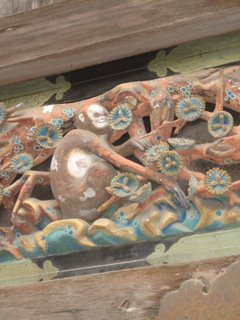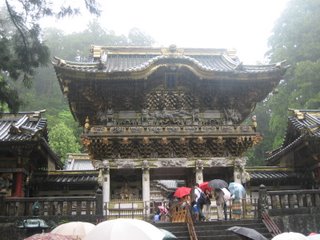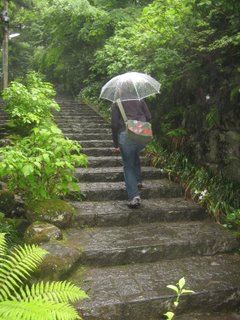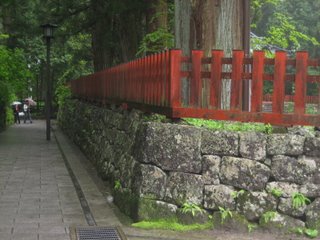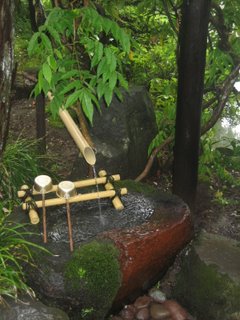 There are two big sculptures of elephant on the gable of the Kamijinko. However, ears and tails are different from the real elephant because the chief painter, Tanyu Kano had not ever seen the real elephant when he painted. Therefore, those sculptures were called Imaginary Elephant.
There are two big sculptures of elephant on the gable of the Kamijinko. However, ears and tails are different from the real elephant because the chief painter, Tanyu Kano had not ever seen the real elephant when he painted. Therefore, those sculptures were called Imaginary Elephant.
 The "Sleeping Cat" exists at the entrance of Okusha Inner Shrine, which is located in Higashikairou (East Corridor.) It is told that the "Sleeping Cat" was made by Jingorou Hidari, and it is the most famous sculpture in the Toshogu Shrine.
The "Sleeping Cat" exists at the entrance of Okusha Inner Shrine, which is located in Higashikairou (East Corridor.) It is told that the "Sleeping Cat" was made by Jingorou Hidari, and it is the most famous sculpture in the Toshogu Shrine. Also, there is a sculpture of sparrow on the backside of the Sleeping Cat. The sparrow will be eaten if the cat is awake. However, the sparrow and the cat co-exist. It means that nation wide chaos is over and peaceful society has come.
Also, there is a sculpture of sparrow on the backside of the Sleeping Cat. The sparrow will be eaten if the cat is awake. However, the sparrow and the cat co-exist. It means that nation wide chaos is over and peaceful society has come.
 A famous carving of the Three Monkeys is on the sacred stable in the Toshogu Shrine in Nikko, Japan. Carvings of monkeys were believed to prevent diseases in horses.
A famous carving of the Three Monkeys is on the sacred stable in the Toshogu Shrine in Nikko, Japan. Carvings of monkeys were believed to prevent diseases in horses.White horses attend the Shinkyu except a rainy and snowy day. They stay the Shinkyu from 10am to 2pm. Color of the sacred horse has to be white, and two white horses are kept today. Also, these horses attend Samurai-style 1,000-person procession together with.
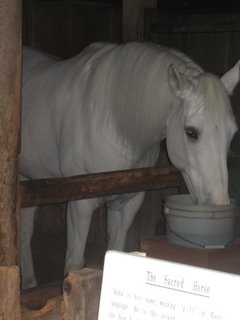
There is no painting on the Shinkyu. Sculptures of Sansaru "Three Monkeys" are put on the crossbar of the Shinkyu. The Sansaru consists of 8 panels like a picture book. Monkey has been treated as a guardian of horse since early times. Therefore, there was a custom to keep monkey in the stable until Muromachi period
(San-en ) Three Monkeys:
) Three Monkeys:
"Hear no evil, speak no evil, see no evil" ) Three Monkeys:
) Three Monkeys: The trio of monkeys is depicted with one having its hands over its ears, another having its hands over its mouth, and the third having its hands over its eyes. Known as the Three Monkeys, they are a tradition in Japanese culture.
 Beginning in the late Muromchi period (1333-1568), it became customary to carve these figures on koshinto, stone pillars u
Beginning in the late Muromchi period (1333-1568), it became customary to carve these figures on koshinto, stone pillars uused during the observance of Koshin. According to the Kiyu Shoran, an early 19th century reference work, the Three Monkeys may also be related to the Sanno belief complex, wherein monkeys play the role of divine messangers. The Three Monkeys represent the Santai (Three Truths) advocated the Tendai Sect of Buddhims. The Tendai founder, Saicho is said to have carved a representation of this ideal in the form of monkeys.
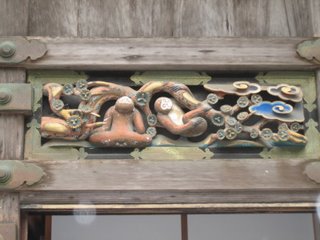
Looking up the sky with holding a big ambition. Blue clouds metaphor ambition.
 Mother monkey looks at the future of her child. Child monkey looks into mother's face with full of trust
Mother monkey looks at the future of her child. Child monkey looks into mother's face with full of trust .
.Preparing independence. Child monkey is still sitting.
